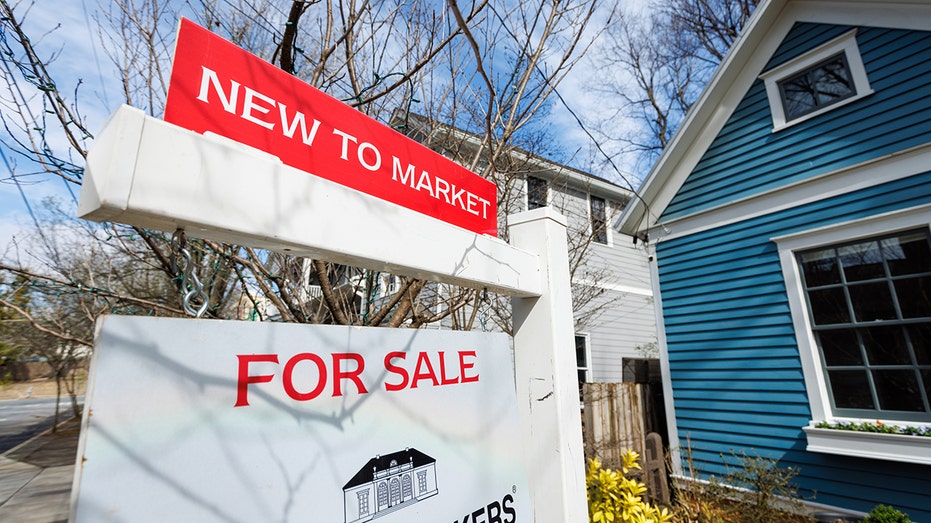First-time homebuyers battling rapid decline in affordability: Numbers 'just not working'
Atlanta Federal Reserve reports US households have to spend nearly 43% of their monthly income to afford the median home price
Atlanta Fed warns US housing affordability is worse than 2007-08
FOX Business' Gerri Willis speaks to new-homeowner-hopefuls Sam and Jacky Pascal, who have felt a 'dramatic' emotional impact from the real estate market.
If you’re stretching your bottom dollar and doing everything right to buy that first-time home – and still striking out – you’re not alone.
According to the Federal Reserve Bank of Atlanta, U.S. housing affordability is at its lowest level in a decade. As of December, the median American household would have to spend about 42.9% of their income to afford the median-priced house, according to its index.
The data shows that housing affordability is worse today than during the peak of the 2008 housing bubble. It is also well above the 32.6% share just one year ago; at this rate, the typical American is paying about $607 more per month to own a median-priced home compared to last year.
"The numbers are just not working right now," homeowner-hopeful Sam Pascal said alongside his wife, Jacky, on "Varney & Co." Thursday. "I think what we're seeing is that buyers are holding onto their homes and there's little supply, and they don't want to let go."
MORTGAGE RATES CLIMB FOR FIFTH WEEK ON JOB GROWTH AND INFLATION
Sam and Jacky claimed to have followed all the correct steps to a successful financial future: they paid off their student loans, saved money from their individual incomes and started building generational wealth. But after being in the housing market for more than a year, the couple has now delayed starting a family until finding their perfect home.

According to the Federal Reserve Bank of Atlanta's Housing Affordability Monitor, Americans are paying more than during the peak of the 2008 housing bubble. (Getty Images)
"I'm hoping we will find a home," Jacky added. "However, we still do have to go through these emotions, through this journey."
The rapid decline in affordability stems from the highest mortgage rates in years and steep home prices.
During the COVID-19 pandemic, home prices soared at a pace not seen since the 1970s with mortgage rates near a record low. Homebuyers, who were flush with stimulus cash and eager for more space during the pandemic, flocked to the suburbs.
Is the US housing market in a recession?
Marcus and Millichap CEO Hessam Nadji discusses volatility in the current housing market, apartment rent rates falling and the expected Case-Shiller 20-city index data.
Demand was so strong, and inventory so low, that at the height of the market some buyers waived home inspections and appraisals or paid hundreds of thousands over asking price.
But the frenzy came to a halt when the Federal Reserve started its most aggressive rate hike campaign since the 1980s to crush runaway inflation, and in some ways, crushed new homebuyers with it.
"The increase in mortgage rates has put many homebuyers back on the sidelines once again, especially first-time homebuyers who are most sensitive to affordability challenges and the impact of higher rates," MBA's vice president and deputy chief economist Joel Kan previously told FOX Business.
GET FOX BUSINESS ON THE GO BY CLICKING HERE
First-time homebuyers, young families will be hit hardest by housing affordability: Jenna Stauffer
Global real estate adviser Jenna Stauffer reports that entry-level homebuyers are having to spend 40% of their income to cover housing payments.
Even with higher interest rates putting homeownership out of reach for millions of Americans, prices are still steeper than just one year ago. The median price of an existing home sold in January was $359,000, an increase of 1.3% from the same time a year ago, according to a separate report from the National Association of Realtors. This marks 131 consecutive months of year-over-year home price increases, the longest-running streak on record.
Prices, however, have moderated slightly after peaking at a high of $413,800 in June.
FOX Business’ Megan Henney contributed to this report.


